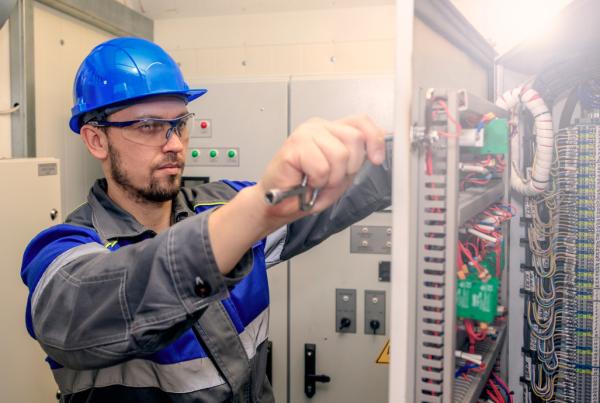Navigating Motor Starting Strategies: Line Voltage Contactor, Soft Start, and VFD
In the realm of electrical engineering and construction, particularly in applications involving electric motors, choosing the right motor starting strategy is pivotal. The decision between using a line voltage contactor, a soft starter, or a Variable Frequency Drive (VFD) hinges on various factors including the application, motor size, and desired control level. This article explores the differences between these starting methods and provides guidance on when to use each type.
Line Voltage Contactor
A line voltage contactor is a straightforward, electromechanical switch used to start and stop a motor. When energized, it directly connects the motor to the line voltage, causing the motor to start at full speed instantaneously.
Advantages:
- Simplicity and Cost-Effectiveness: Contactors are simple in design and relatively inexpensive.
- Reliability: Due to their simplicity, they have a long lifespan with fewer failure points.
- Ease of Maintenance: Being a common component in electrical systems, they are easy to maintain and replace.
Disadvantages:
- High Starting Current: Contactors apply full line voltage immediately, causing a large inrush current that can be 6-10 times the motor’s full load current.
- Mechanical and Electrical Stress: The sudden start can cause significant stress on both the motor and the electrical supply system.
- Lack of Control: There is no control over the starting process, such as speed ramp-up or torque control.
When to Use: Line voltage contactors are best suited for small motors where a high starting current won’t cause problems or in applications where motors do not start frequently, and the simplicity and cost are more important than controlling the starting characteristics.
Soft Start
Soft starters gradually increase the voltage supplied to the motor, resulting in a softer acceleration up to full speed. This method reduces the inrush current and lessens mechanical and electrical stress.
Advantages:
- Reduced Inrush Current: By controlling the voltage, soft starters limit the starting current, protecting the electrical supply from large spikes.
- Less Mechanical Stress: Smooth acceleration reduces wear and tear on mechanical components like gears and belts.
- Adjustable Start and Stop: Users can adjust the start and stop times, allowing for more control over the motor’s performance.
Disadvantages:
- Cost: Soft starters are more expensive than line voltage contactors.
- Heat Generation: They can generate heat during operation, requiring possible cooling measures.
- Limited Functionality: Unlike VFDs, soft starters do not offer full-speed control or energy savings at lower speeds.
When to Use: Soft starters are ideal for applications where it’s important to reduce mechanical stress and control the starting current, such as in large pump systems or conveyor belts. They are also useful in locations with weak power supplies where a high starting current is undesirable.
Variable Frequency Drive (VFD)
VFDs provide the most advanced control by varying the frequency and voltage supplied to the motor. This allows complete control over the motor’s speed, torque, and power consumption.
Advantages:
- Full Speed Control: VFDs offer precise control over motor speed, which is beneficial for process control and energy savings.
- Reduced Energy Consumption: They can significantly reduce energy consumption, especially in applications where motors don’t need to run at full speed continuously.
- Advanced Features: VFDs offer features like dynamic braking, reverse operation, and programmable acceleration/deceleration curves.
Disadvantages:
- Complexity and Cost: VFDs are the most complex and expensive option among the three.
- Potential for Harmonic Distortion: They can introduce electrical noise and harmonic distortion into the power system, which may require additional filtering.
- Environmental Sensitivity: VFDs can be sensitive to dust, moisture, and temperature, requiring careful installation and sometimes additional cooling or ventilation.
When to Use: VFDs are best used in applications requiring precise speed control, energy efficiency, or variable loads, such as in HVAC systems, variable speed pumps, and fans. They are also ideal in processes where the motor speed needs to be adjusted frequently or varied based on the process requirements.
Conclusion
Choosing the right motor starting strategy is essential for the optimal performance and longevity of motor-driven systems. Line voltage contactors, with their simplicity and cost-effectiveness, are suitable for smaller or less frequent applications. Soft starters, offering controlled start and stop with reduced mechanical stress, are ideal for medium to large motors where inrush current and mechanical stress are concerns. VFDs, although more complex and costly, provide unparalleled control and efficiency, making them suitable for applications requiring precise speed control and energy savings.
In the construction and construction-related businesses, understanding these differences and making informed decisions about motor starting strategies can lead to significant improvements in system performance.




